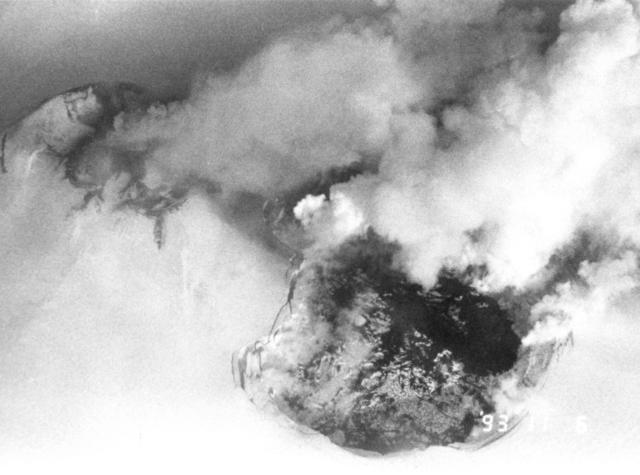Report on Veniaminof (United States) — February 1994
Bulletin of the Global Volcanism Network, vol. 19, no. 2 (February 1994)
Managing Editor: Richard Wunderman.
Veniaminof (United States) Incandescent lava flow; low-level steam-and-ash plumes
Please cite this report as:
Global Volcanism Program, 1994. Report on Veniaminof (United States) (Wunderman, R., ed.). Bulletin of the Global Volcanism Network, 19:2. Smithsonian Institution. https://doi.org/10.5479/si.GVP.BGVN199402-312070
Veniaminof
United States
56.17°N, 159.38°W; summit elev. 2507 m
All times are local (unless otherwise noted)
A video tape recorded on 27 January showed eruptive activity at Veniaminof. The tape revealed small incandescent lava flows at the base of the intracaldera cone and within the melt pit that was observed in November 1993 (figure 7). Reports indicate that low-level steam-and-ash emissions have continued at Veniaminof during February and early March. Ground observers saw a dark plume and darkened snow at the vent during the first week of March. A large steam plume was observed during a period of clear weather on 11 March.
Geological Summary. Veniaminof, on the Alaska Peninsula, is truncated by a steep-walled, 8 x 11 km, glacier-filled caldera that formed around 3,700 years ago. The caldera rim is up to 520 m high on the north, is deeply notched on the west by Cone Glacier, and is covered by an ice sheet on the south. Post-caldera vents are located along a NW-SE zone bisecting the caldera that extends 55 km from near the Bering Sea coast, across the caldera, and down the Pacific flank. Historical eruptions probably all originated from the westernmost and most prominent of two intra-caldera cones, which rises about 300 m above the surrounding icefield. The other cone is larger, and has a summit crater or caldera that may reach 2.5 km in diameter, but is more subdued and barely rises above the glacier surface.
Information Contacts: AVO.


